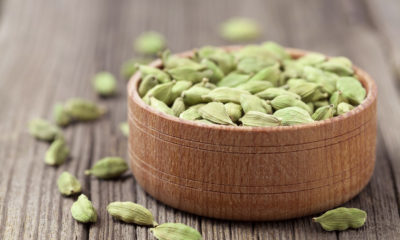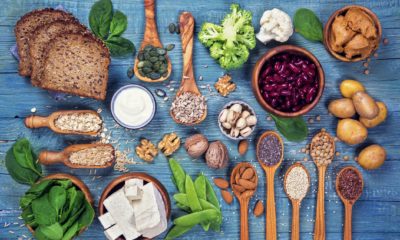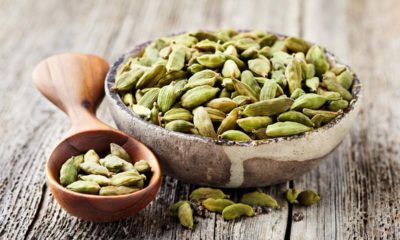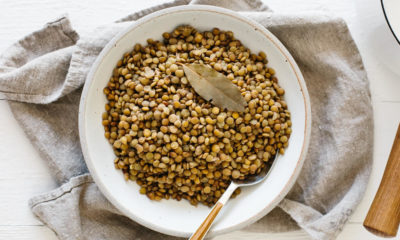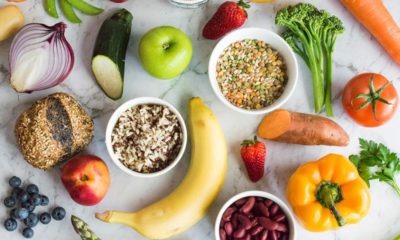Food
Food Escapades with Thomas Zacharias

The story of how and why Thomas Zacharias became Chef Partner at The Bombay Canteen
Words by Rheanna Mathews Photographs from The Bombay Canteen
To hear him talk about his life, kismet seems to have had an active role in guiding his choices. Or perhaps he was just dealt a particularly good hand, since he didn’t have to go on that agonising search for a vocation that most of us are cursed with. Thomas Zacharias always knew he wanted to do what his ammamma did; he wanted to see people’s faces light up when they ate his food. And so he became a chef.
Retrospective advice
Having been cooking in a professional kitchen only for ten years, Thomas has been executive chef at a renowned restaurant in Mumbai, The Bombay Canteen, for three of them. But the speed with which he rose to that height is something he doesn’t like to dwell on. “I should have worked in other kitchens, under other seasoned chefs,” he insists. “If I could go back, I’d choose to gain a lot more experience before helming my own kitchen.” An alumnus of the Culinary Institute of America, New York, you get the idea that Thomas, known fondly as Thoma, despite what he says, must have shown potential early on, routinely inspiring others to place their faith in him. Soon after his return to India, chef Manu Chandra, also an alumnus of the CIA, suggested that he become sous chef at The Olive, Mumbai, and a scant three years later, the offer to be head chef at The Bombay Canteen came his way.
The journey to the top though, did in no way come easy. As a chef, one needs to constantly reinvent oneself; having learned the basics of cooking at Manipal, the finer aspects of it at the CIA, which were then honed at Le Bernardin, the French Seafood restaurant where he worked for a year, Thomas went on a four-month jaunt through Europe, enticed from one point to the next by the promise of exceptional food experiences.
An Italian epiphany
One such experience in Modena, Italy gave him the epiphany that then dictated the course of his career. The chef patron at world famous restaurant, Osteria Francescana, Massimo Bottura, remarked that though he cooked modern Italian food, his inspiration came from his grandmother’s cooking. “That struck a chord in me,” says Thomas. “This was in 2013 and I’d been cooking professionally for a while, and I realised then that I’d forgotten where I’d come from. I had been making food as it had been taught to me at school. I suddenly wanted to look into creating Kerala inspired food and putting my own spin on it. When Bombay Canteen came my way, and told me of their concept to create modern dishes with locally available produce, my mind was blown. Yet, I only saw it as a segue into what I eventually wanted to do, until Bombay Canteen became way bigger and more than any of us ever expected. For me, then, it became about Indian cuisine as a whole.”
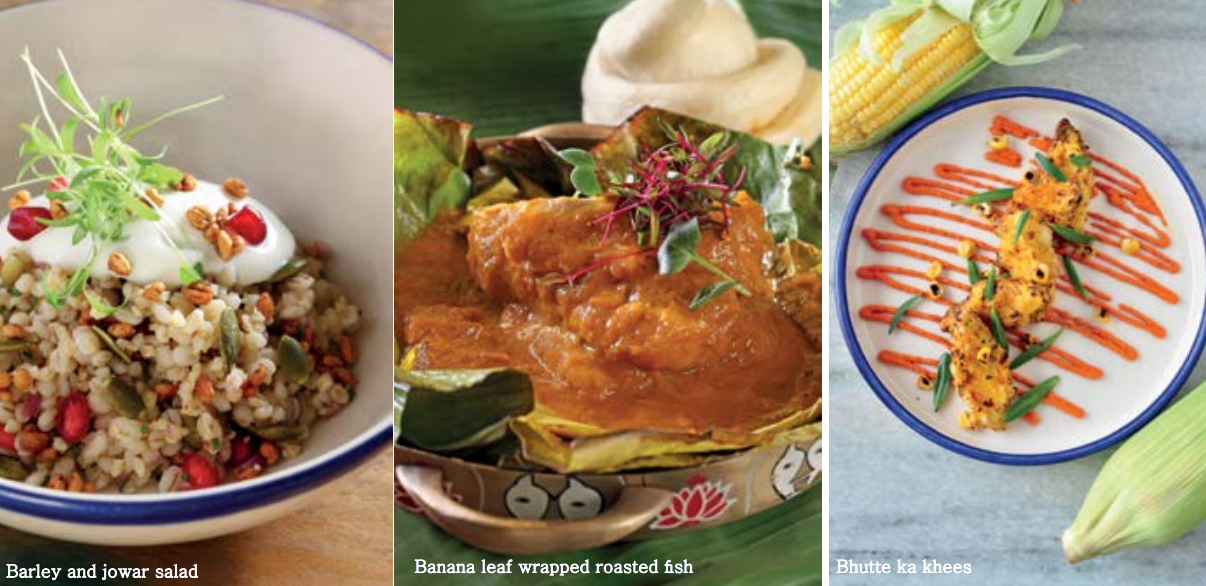
Thomas’ quest to explore Indian food at the Bombay Canteen thus saw him travel like he did before, but this time, he was exploring the native cuisines of his own land. He began to define his style of cooking as “an essential reimagining of Indian food, making it more fun, more approachable. At the root of it, food needs to taste good, has to be something people would crave and come back for. Everything else is really secondary”. Though his vision of food had expanded to include the tastes of the entire country, he had by no means forgotten his own enterprising Malayali roots. The Bombay Canteen routinely serves
up Kerala-inspired dishes like their famous Meen Pollichathu that sustainably uses local fish instead of the karimeen we are familiar with, the KFC or Kerala Fried Chicken, and the olan inspired soup they currently have on the menu. Favourite ingredients, however, are a rarity, as he appreciates whatever is in season. Driving to the market to check out the winter vegetables that would have just come in, while having our conversation, he enthusiastically called out the names of the produce he expected to buy – fresh toor, hara channa, mango ginger, green garlic, moras bhaji, ponkh – the few names I caught.
Tasting throughout the day
When it comes to eating food himself, however, Thomas is prey to what most professional chefs suffer from – the inability to have proper meals on time. Even though in his blog, Memoirs of a Chef, he has exalted the need to have proper sit-down meals, he admitted that it hardly ever happens. How then does he survive the strenuous work day of a chef? He explains, “One thing I’m really particular about is tasting. There’s a Mallu inspired chutney which we serve with our most popular dish, Eggs Kejriwal. From when we began serving it, till now, for around two and a half years, I still taste that chutney every day. That’s just an example”, he laughs and goes on, “I keep tasting everything throughout the day, and that sort of fills me up.” But one meal he makes sure he has is the duck curry his grandma used to make, with puttu, every time he returns to his hometown of Cochin – “my perfect comfort food”, he says.
Thomas strikes you as quiet and mild, yet fun loving chef, a far cry from the mercurial chefs one has heard about. When the difference was pointed out, he said, “I’m actually a strong proponent of the opposite. I’m well aware of the stereotype and also aware that’s how a lot of kitchens here in India and abroad are run. It need not be that way.” He then outlined the unusual policy he follows, “In my kitchen, there’s a super positive environment where people learn and grow and have fun. This might be more challenging than the other route, but the results can’t be denied – happy cooks make better food.”
He went on to clarify that even when it came to hiring, he places more weight on attitude – even hiring career changers and newcomers – rather than experience. “You can teach someone how to cook anything, but you can’t really change their attitude. So, I find people who are positive, driven, passionate, and want to learn.”
“Being a professional cook is a thankless job if you don’t have a passion for it. But if you do, and you thrive on the energy and the pressure, and the excitement that comes out of seeing people enjoy your food, then it’s incredible.” And where does this passion come from? From experience collected throughout his life, the most resilient – and perhaps most poignant – of which is perhaps that of ‘Pazham peechi day’. “My cousins and I used to spend our evenings after school at ammamma’s house and she’d make us something she called pazham peechi, essentially mashed bananas mixed with flour and sugar, and deep fried. We were so excited when it was pazham peechi day…I know it sounds corny, but I’m a chef because I get to be the person who brings joy to people’s lives. Like she did.”
Well, Thoma, Ammini would be proud.
Food
Coffee Pairing: Foods That Complement Your Morning Brew
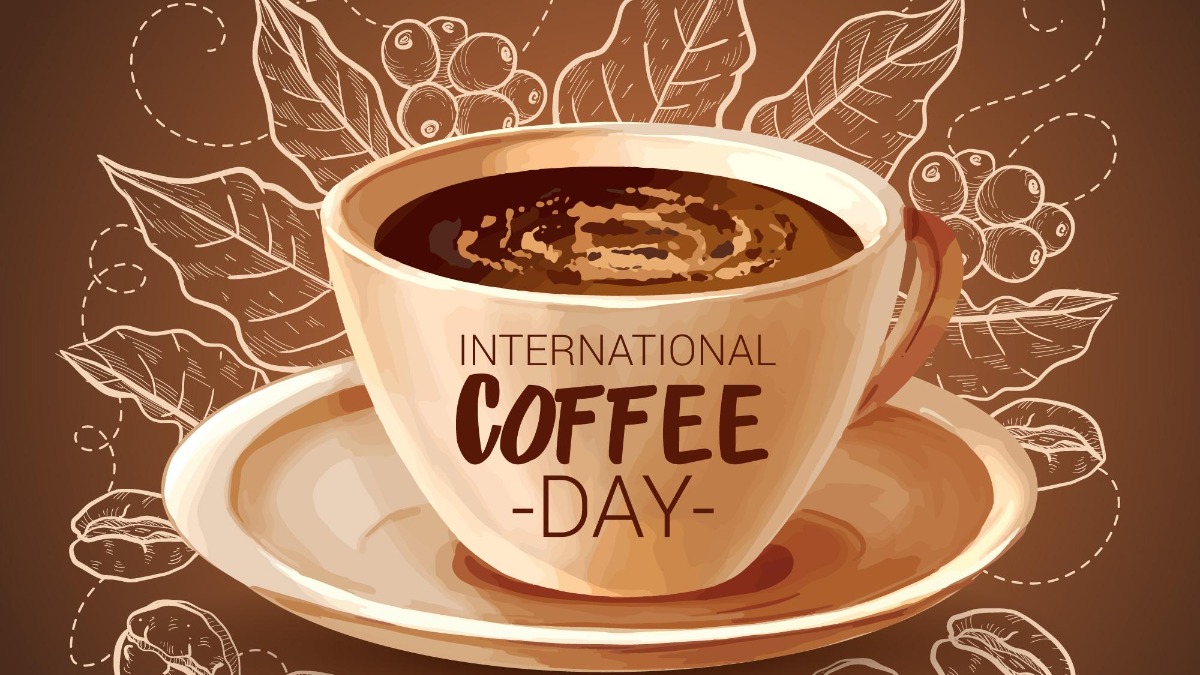
International Coffee Day is a celebration for coffee lovers around the world, offering the perfect opportunity to elevate your morning coffee experience by pairing it with the right foods. While we often focus on how we brew our coffee, the right food pairing can make a world of difference, enhancing the flavors and aromas of your favorite cup of joe. Let’s dive into some delightful coffee and food pairings that will make your mornings even more enjoyable.
1. Espresso & Dark Chocolate

If you’re an espresso enthusiast, pairing this bold and concentrated coffee with dark chocolate is a match made in heaven. The richness of the chocolate complements the intensity of the espresso, balancing its bitterness while enhancing its deep, earthy notes. Try a square of dark chocolate with 70% cocoa to elevate your espresso experience.
2. Latte & Croissants

For a softer and creamier start to the day, a latte paired with a buttery croissant is a classic combination. The mild and frothy nature of the latte contrasts beautifully with the flaky, buttery layers of the croissant, offering a harmonious blend of textures and flavors.
3. Cappuccino & Almond Biscotti

Cappuccino, with its frothy milk and rich espresso base, pairs wonderfully with almond biscotti. The biscotti’s crunchy texture and subtle sweetness complement the coffee’s bold flavor, making this an ideal choice for those who enjoy dipping their snacks into their coffee.
4. Cold Brew & Avocado Toast

For a modern and trendy breakfast, cold brew coffee pairs exceptionally well with avocado toast. The smooth, refreshing flavor of cold brew contrasts with the creamy, savory taste of avocado spread on toasted sourdough, creating a well-balanced and satisfying meal.
5. Americano & Blueberry Muffins

The subtle and smooth profile of an Americano pairs perfectly with a fruity blueberry muffin. The sweetness and slight tartness of the blueberries bring out the brighter, fruity notes in the coffee, while the muffin’s soft texture complements the light body of the Americano.
6. Mocha & Cinnamon Rolls

If you’re in the mood for something indulgent, pairing a mocha with a cinnamon roll will satisfy your sweet tooth. The chocolatey, rich flavor of the mocha mirrors the sweetness of the cinnamon roll’s glaze, while the spiced notes from the cinnamon add a layer of complexity to the pairing.
7. Flat White & Banana Bread

Flat whites are known for their smooth, velvety texture and strong espresso flavor, making them an excellent match for the moist, dense goodness of banana bread. The banana bread’s natural sweetness and subtle flavors work well to soften the intensity of the coffee, creating a balanced taste.
8. Turkish Coffee & Baklava

For a cultural twist, pair the bold, unfiltered flavors of Turkish coffee with the sweetness of baklava. The rich, syrupy layers of filo pastry filled with nuts and honey provide the perfect complement to the strong, concentrated coffee, creating a sensory experience that is both rich and satisfying.
9. Iced Coffee & Fresh Fruit Salad

On warmer days, an iced coffee goes well with a fresh fruit salad. The chilled, refreshing nature of iced coffee enhances the natural sweetness and juiciness of fruits like melons, berries, and citrus, making it a light and healthy pairing for a quick breakfast.
10. Macchiato & Cheese Danish

For those who enjoy a macchiato, the addition of a cheese Danish offers a creamy and slightly tangy balance to the intense espresso shot topped with just a bit of milk foam. The Danish’s soft, cheesy filling contrasts well with the strong coffee, making each bite more indulgent.
The beauty of coffee lies in its versatility, and with the right pairing, you can transform your morning coffee into a more elevated culinary experience. Whether you prefer something sweet or savory, there’s a perfect food match for every type of coffee. So, on this International Coffee Day, take a moment to experiment with different pairings and discover new flavors that enhance the joy of your morning brew.
Food
Benefits of Including Crab in your Diet
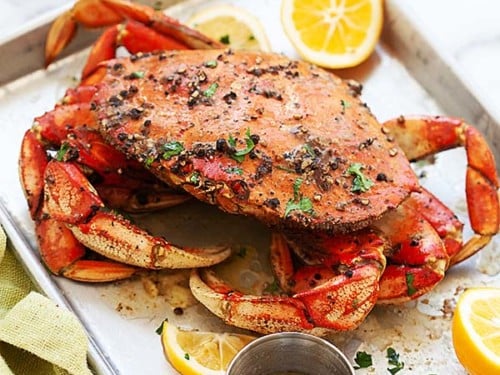
Crab has all the attraction of seafood without the fishy flavor that some people want to avoid. It is delightfully salty with a delicate mineral sweetness. Crabs were reportedly among the foods that coastal societies eaten a hundred years ago. On the menus of the greatest restaurants today, it stands out as the highlight dish. Crab is famous for its distinctive, exquisite flavor as well as for the health benefits it provides.
Omega-3 fatty acids and protein are abundant in crabs. The Food Experts advise two servings of fish and seafood every week, which is not difficult.
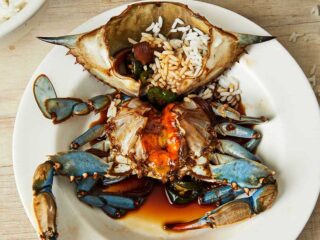
Good Protein Source
Crab is a low-fat, nutritious protein source that boosts metabolism and gives you energy. In reality, crab has less saturated fat and about the same amount of protein per 100 grams as other meats.
Strengthens Heart Health
Consuming a lot of crab meat can actually benefit your cardiovascular system. The Omega-3 fatty acids, zinc, and protein found in crab are all beneficial sources of lowering cholesterol. Having lower cholesterol lowers your chances of heart attacks and strokes.
Increases Brain Activity
Crabs are healthy for you since they are a high source of selenium, vitamin B2, copper, and other vital vitamins and minerals. Together with omega-3 fatty acids, these nutrients support healthy brain ageing and reduce the risk of dementia. They aid in defending against oxidative stress, inflammation, and other elements that may have an impact on the growth and health of the brain.
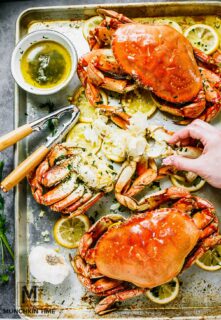
Strengthens bones
You may already be aware of the significance of calcium for bone health. However, did you realize that phosphorus plays an equal role? Due to its high phosphorus content, crab flesh can aid in the development of strong, healthy teeth and bones.
Contains selenium
Compared to other meats, crab offers a substantially higher supply of selenium. As an antioxidant, this necessary mineral not only assists in preventing cell damage from free radicals but also strengthens your immune system. Selenium aids in the regulation of your metabolism and is essential for healthy thyroid function.
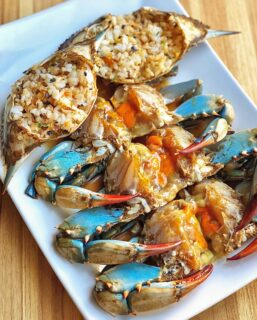
An aphrodisiac
The aphrodisiac property of crab meat promotes libido and sexual energy. They have high quantities of zinc and substances that increase estrogen and testosterone levels, enhancing sexual desire.
Makes the blood flow faster
Copper is yet another significant mineral present in crab meat. One significant advantage of copper is that it facilitates the body’s absorption of iron, which enhances the creation of red blood cells. After injuries and illnesses, proper circulation aids in the healing process.
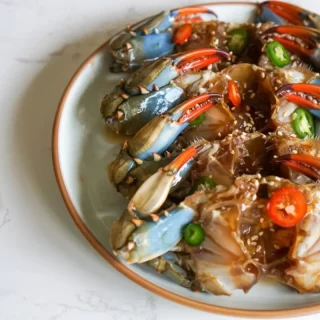
Consuming excessive amounts of crab can have certain unfavorable impacts, just like with most other foods. If you eat too much of some of the nutrients in crab, such copper and zinc, you could get sick. Crab, however, is a fairly nutritious item to eat in moderation unless you have a seafood allergy, and adverse effects are uncommon. Before consuming any seafood, always make sure you don’t have any allergies.
Food
The Taste Of Malayali Kitchen In Sweden
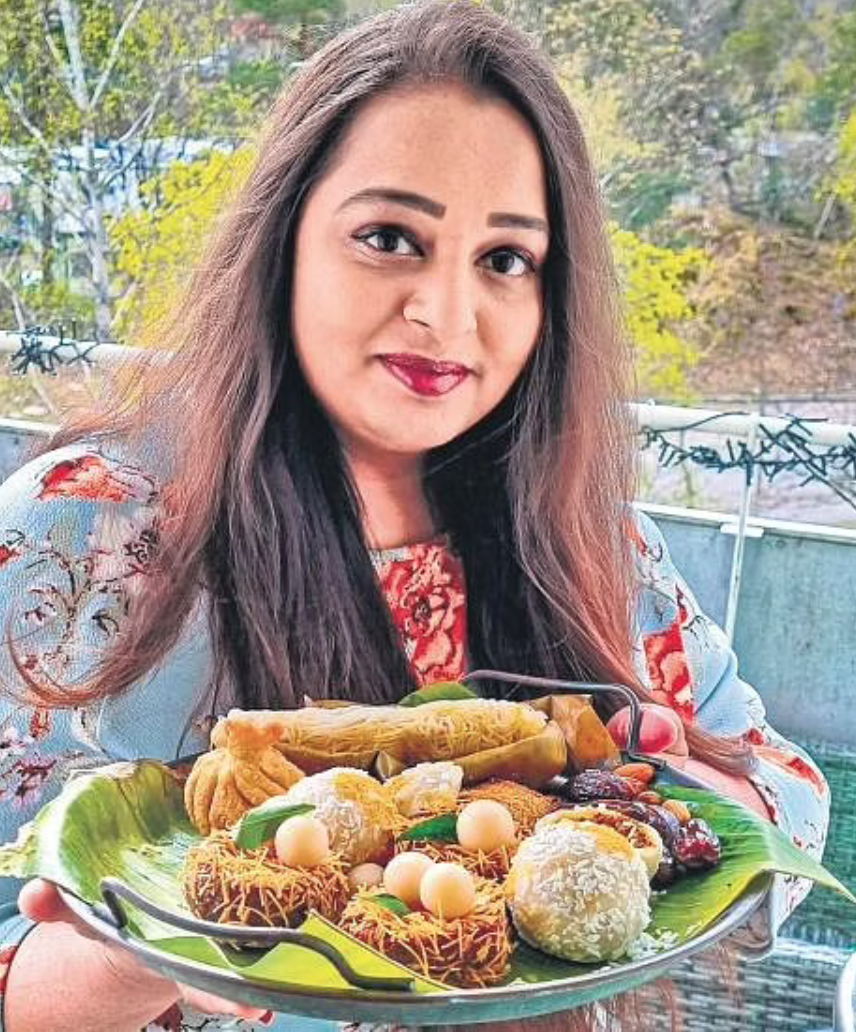
A Kochi-based malayali is creating a sensation by preparing Kerala Cuisine in the foreign swedish kitchen. Devi Nair, who has been settled in Sweden with her husband for almost 10 years, wanted her daughter to experience the delicacies of the Malyaali culture along with her International palette. The sense of homesickness and nostalgia has a part to play in this venture as well. In recent years, as the pandemic hit she chose to share her cooking extravaganzas on Instagram which led her to become more known to the public. Her recipes featured celebratory treats like the Bengali confection Rosbora, local parotta, and non-vegetarian Kerala foods that are popular on social media because they’re simple to make yet delicious to eat and look at. Devi whips up a storm of authentic Kerala delicacies during Malayali festivals. Tender, plump unniyappam, spongy kozhukkatta, rice dumplings, Vishu ada, and Vishu katta are just a few of the items on her Vishu menu this year. She prepared undaputtu with spicy prawn filling, kilikkoodu with meat and egg white, and ammini kozhukatta, a spicy rice dumpling, for Eid. It is also heard that she is planning to launch her own bakery in Sweden as well.
Words By : Goutham Satheesh
-

 Style11 months ago
Style11 months agoBridal Guide : Best Looks of Radhika Merchant Ambani
-

 Fashion1 year ago
Fashion1 year agoMost Discussed Ajrakh Saree of Alia Bhatt
-

 Entertainment1 year ago
Entertainment1 year agoBridal Bliss : All Bridal Looks of Swasika Vijay
-

 Movies1 year ago
Movies1 year agoA Nostalgic Journey Through Love &Cinema : Best Bollywood Romantic 90s Movies
-

 AD8 months ago
AD8 months agoPopular Curtain Fabrics to Consider for Your Home
-

 Events9 months ago
Events9 months agoBest of Fashion Looks : Diya Krishna Wedding
-

 Events8 months ago
Events8 months agoThe L’Oréal Paris Show at Paris Fashion Week 2024
-

 news8 months ago
news8 months agoLaapataa Ladies: Kiran Rao’s Social Satire Becomes India’s Official Entry for the 2025 Oscars




